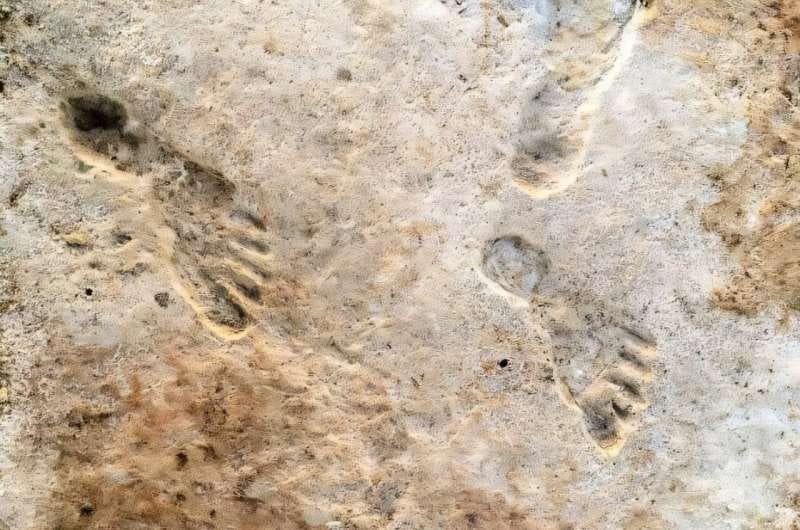🧐 Ancient Beat #154: Denisovan faces, boat burials, and the pre-Clovis peopling of the Americas
Hello again, my friends! Welcome to issue #154 of Ancient Beat.
Let’s get right into it — here’s the latest ancient news. 👇
🗞 Ancient News: Top 5
Dragon Man Unmasked: How a Century‑Old Skull Rewrites Denisovan History — A nearly complete skull unearthed in 1933 near Harbin, China, and hidden until 2018, dates to at least 146,000 years ago. Analysis of ancient proteins from the petrous bone and mitochondrial DNA from dental calculus clearly links it to Denisovans! The skull, dubbed “Dragon Man” and scientifically named Homo longi, combines archaic features (large brow ridge, wide molars) with modern traits (flat face, brain size around 1,420 cc). This discovery offers the first vivid cranial portrait of Denisovans, revealing their robust build and extending their known range across East Asia. Very cool!
Earliest Evidence Of Humans In The Americas Confirmed — If you’ve been reading the Beat for a while, you’ll know all about the ongoing White Sands debate. Well, here we are again. Human footprints discovered at White Sands National Park in New Mexico have now been “reliably dated” to between 20,700 and 22,400 years ago, placing people in North America during the Last Glacial Maximum. Prior to this most recent study, dating was contested. And let’s be honest, it probably still will be, once the opposition has their say. Anyway, the dating was verified using radiocarbon analysis of ditchgrass seeds and sediment. The footprints were left along the shoreline of ancient Lake Otero and appear alongside tracks from extinct megafauna, including mammoths, giant ground sloths, camels, and dire wolves. The evidence suggests these were mobile hunter-gatherers rather than a settled population. This challenges long-standing models that humans arrived in the Americas only around 16,000 years ago and points to the possibility of earlier inland or coastal migrations.
Ancient Xiaohe Boat Burials Reveal Symbolic Water Journey Into The Afterlife — In the arid Tarim Basin of Xinjiang, China, the Xiaohe culture (ca. 1950–1400 BCE) created a striking funerary tradition centered around narrow, canoe-shaped coffins interred in sand, surrounded by upright wooden posts. These posts—painted red or dark-tipped and shaped like phallic or vulva forms—often defy gender alignment, suggesting symbolic rather than literal meanings. The burials reflect a spiritual worldview where the dead embarked on a water-based journey to the afterlife, with the boat coffins and poles acting as paddles or moorings. The cemetery, originally containing up to 350 graves, also includes cattle skulls and hides arranged in ritual formations, highlighting the animal’s sacred and economic role. Despite flourishing with a mixed economy of farming and herding, the Xiaohe culture vanished around 1400 BCE. Their preserved burial practices, exposed in one of the world’s driest climates, offer deep insights into how water symbolism shaped Bronze Age conceptions of life, death, and beyond.
How a Lost Siberian Language Rewrites the History of the Huns — A recently rediscovered and decodable Siberian language pushes back understandings of the Hunnic past. Analysis of linguistic evidence—ancient loanwords, phonetic patterns, and reconstructed grammar—reveals links between this “lost” language and early steppe confederations. It suggests that Hunnic society was linguistically diverse and that this tongue was not an imperial ancestor of Turkic or Mongolic languages but a distinct branch. The findings reshape the narrative of early nomadic empires in Inner Asia and their cultural connections
DNA Reveals Poland’s First Kings May Have Scottish Origins, Challenging Founding Myths — Genetic analysis of skeletal remains from Piast-era crypts suggests that Poland’s first royal dynasty may trace its male lineage to the Picts of ancient Scotland. In examining 33 individuals from 1100–1495 CE, researchers found that all male remains shared a rare Y-chromosome haplogroup closely related to that of a 5th–6th century man buried in eastern Scotland. This challenges long-held beliefs that the Piasts were of purely Slavic origin, instead hinting at elite migration or strategic marriage alliances prior to Mieszko I’s reign. While critics have raised questions about potential contamination or error, the findings align with a model in which a foreign ruling elite merged into an established, genetically stable local population. Environmental data from Lake Lednica supports a 9th-century ecological shift tied to fortified settlement growth and amber and slave trade activity. The Piasts’ rise appears driven more by trade and integration than conquest, blending outside influence with enduring regional continuity.
That’s it for the free Top 5! If you’re a free subscriber, sign up for the paid plan for another 25 discoveries and 4 recommended pieces of content covering baby rattles, sanctuaries to legends, gold spears, and solved mysteries.
Until next time, thanks for joining me!
-James
Twitter: @jamesofthedrum
P.S. Here’s my Buy Me A Coffee link if you’d like to support my efforts with a donation.
P.P.S. If you want access to the paid version but it’s a little too steep for you right now, just email me — I want this to be accessible.
P.P.P.S. Paid members, read on!
🗞 Ancient News: Deep Dive
Keep reading with a 7-day free trial
Subscribe to Ancient Beat to keep reading this post and get 7 days of free access to the full post archives.


